Baseball

Baseball Base Running
In baseball, base running is the act of running around the bases performed by members of the team at bat. In general, base running is a tactical part of the game with the goal of eventually reaching home to score a run. The goal of batting is generally to produce base runners, or help move base runners along. Runners on second or third base are considered to be in scoring position since a normal hit, even a single, will often score them. Part of the goal of a runner and a batter is to get the runner into scoring position.
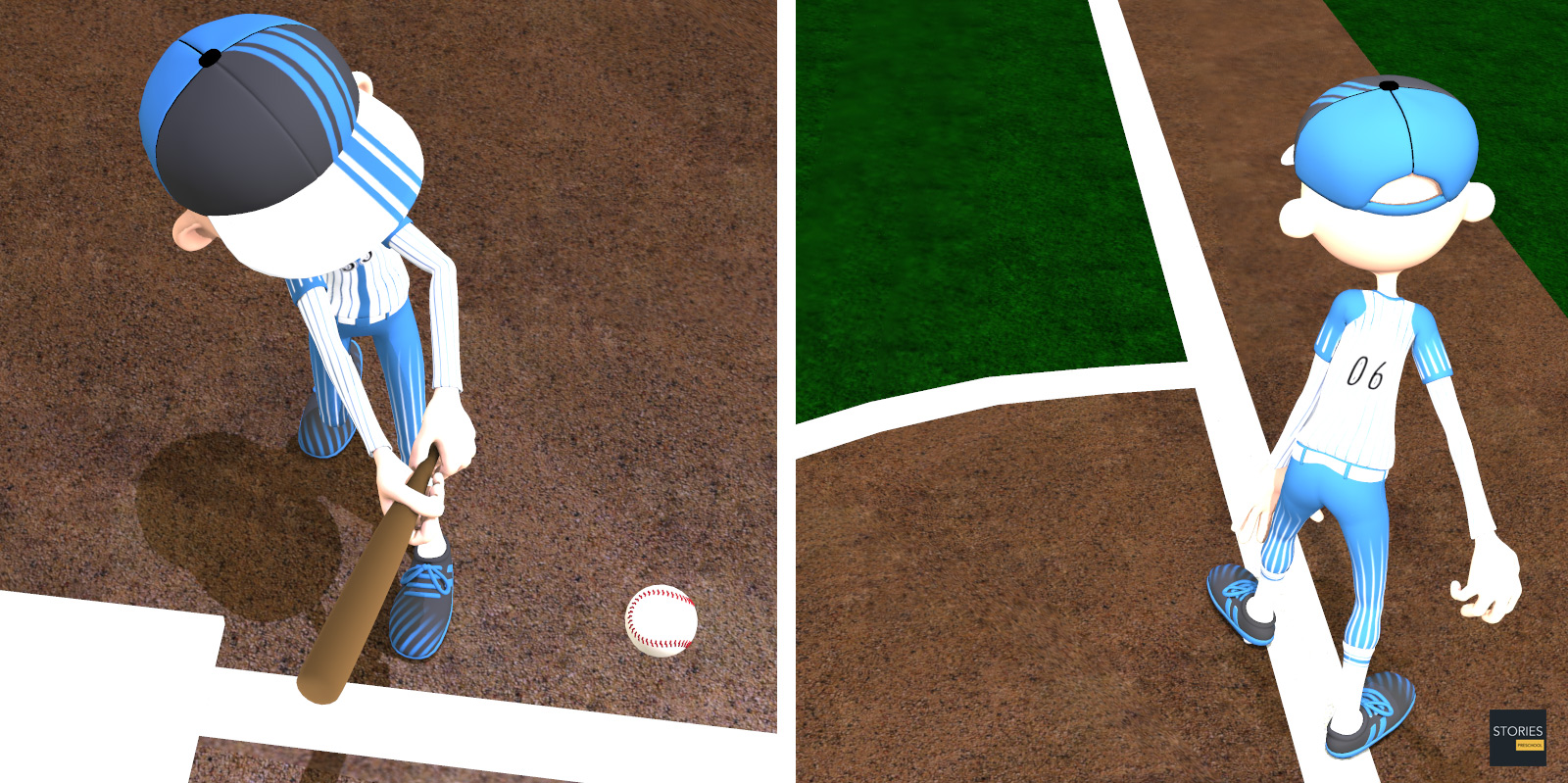
Becoming a Runner
For any base running to occur, a batter must initially become a base runner. This happens when:
- he hits a ball into fair territory and is not put out,
- he receives a base on balls,
- he is hit by a pitch,
- he hits into a fielder's choice,
- the defensive team commits an error that allows him to reach base,
- there is an uncaught third strike, or
- the catcher or any fielder interferes with him, or
- a fielder other than the catcher interferes with him
The Batter-Runner
The term batter-runner is used in official terminology to identify an offensive player from the time he puts a fair ball into play or the third strike is not caught (thereby ceasing to be a batter) until the end of the play he initiated, whether the play results in the player being put out or becoming a runner by legally attaining first base or any subsequent base. The term is generally not applied if the batter hits a foul ball or to a player awarded first base (ex. for a base on balls).
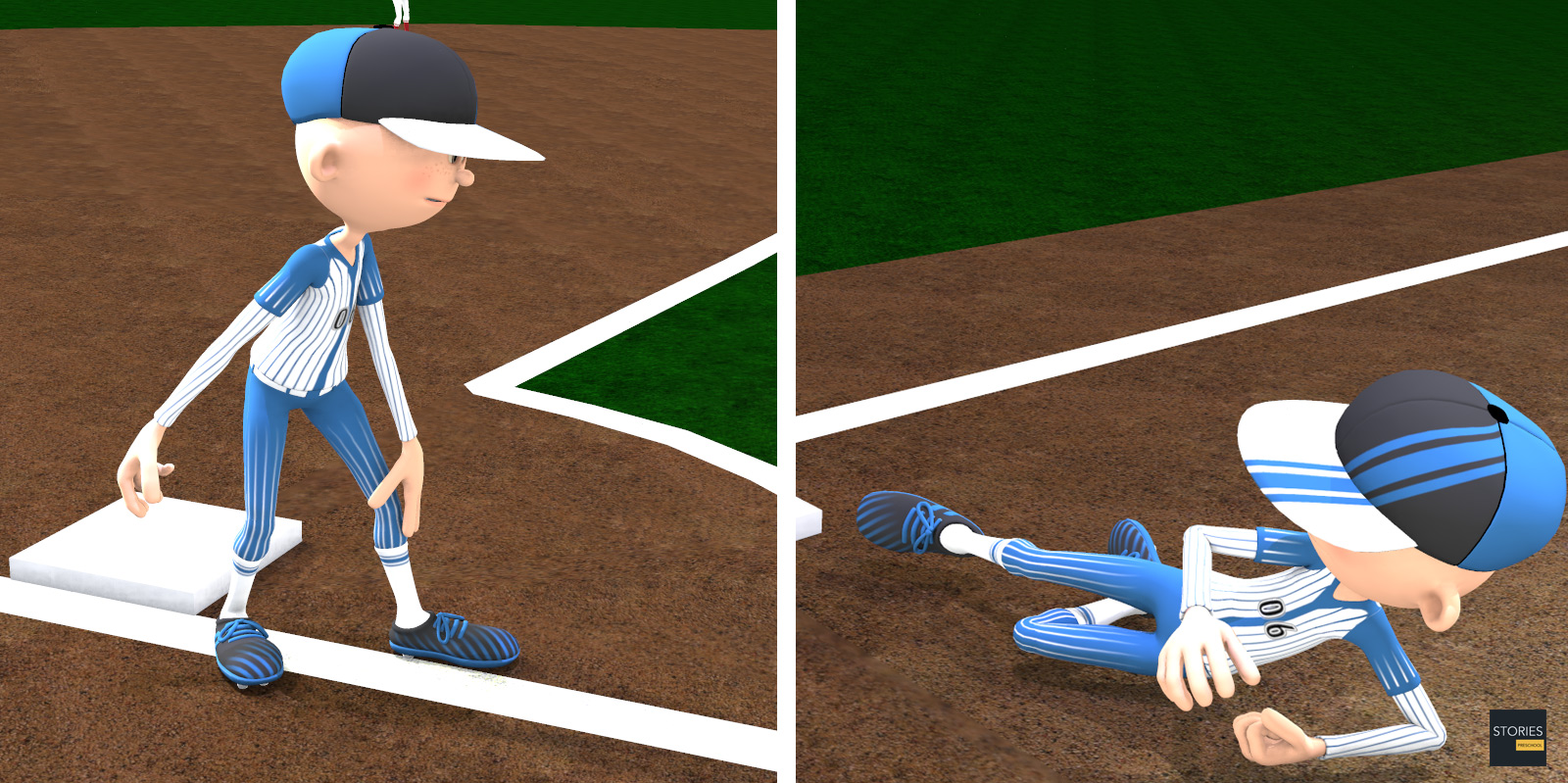
Ceasing to be a Runner
A player ceases to be a base runner when:
- he scores a run,
- he is put out in any way, or
- a teammate is put out for the third out of the inning.
If a base runner's teammate is put out for the third out of the inning, he is said to be left on base (LOB).
Running the Bases
A runner who is touching a base which he is entitled to occupy may not be tagged out. Runners may attempt to advance from base to base on any fair ball that touches the ground. When a ball is hit in the air and caught by the defending team, runners must return and touch the base they occupy—called tagging up—after the ball is first touched by a fielder. Once they do this, they may attempt to advance at their own risk. On a ball that touches the ground in fair territory, if there is a force, runners are required to run.
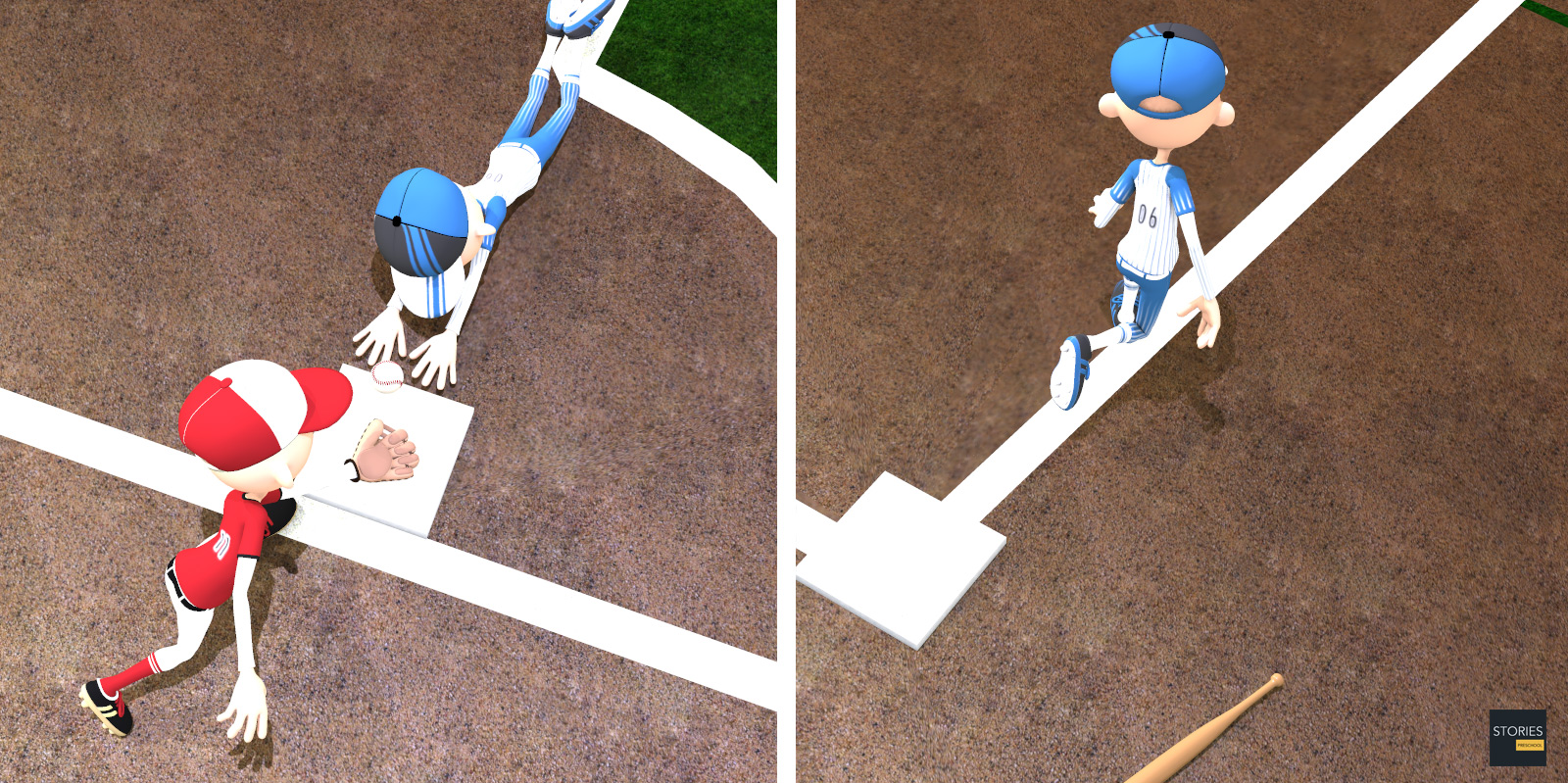
Base runners may attempt to advance at any time while the ball is alive, even before or while the pitcher is throwing a pitch. The catcher—or pitcher, in lieu of delivering the pitch—often tries to prevent this by throwing the ball to one of the infielders in order to tag the runner. This pick-off attempt is usually unsuccessful in tagging out the runner but is effective in keeping the runner closer to the base. If the runner is tagged out while diving back to the base, it is called a pickoff. If the runner attempts to advance to the next base but is tagged out before reaching it safely, he is caught stealing. A successful attempt by the runner is called a stolen base. If a pitch gets away from the catcher, runners may also try to advance. This may be a wild pitch, if the pitcher is held responsible for the ball getting away, or a passed ball if the catcher is deemed to be at fault. Sometimes the defending team will ignore a runner who is trying to steal a base; in this case a runner is not credited with a steal, and the base is attributed to defensive indifference.
Strategy
The standard dimensions of a baseball field, with 90 feet (27.4 m) between bases, generate many close base running plays. On one hand, an infielder who cleanly fields a ball hit on the ground, then throws it quickly and accurately, will usually get the ball to a base before the runner reaches it. However, any hesitation or mistake on the part of the fielder may allow the runner to reach the base safely. Teams that are familiar with their opposition may attempt to run when a certain player has the ball. For example, on a deep fly ball to center field with a man on second base, if the center fielder is known to have a weak arm, the runner on second base may attempt to tag up to get to third, even though that is a risky play.
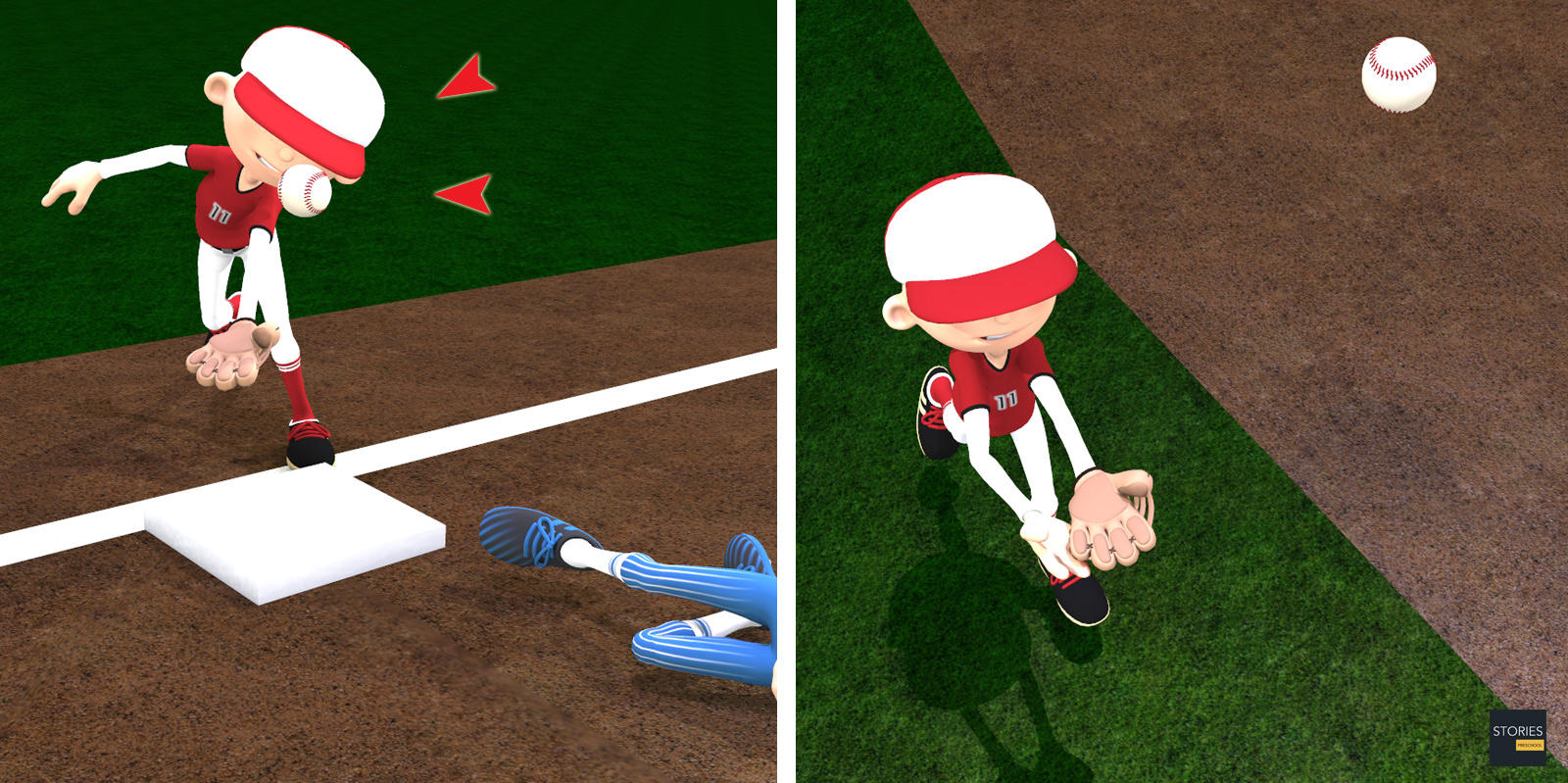
Base running and hitting are often combined to produce better results. Smart, quick base running is a key element in the squeeze play. The hit and run and similar plays involve base running. When the count is full and there are two outs, runners with a force behind them will always run as if they were stealing, since they cannot be caught stealing: a strike is the third out, a walk entitles him to the next base, a foul is not in play (runners return to previous bases without jeopardy), and the runner should be running on any ball hit into play. Also, good runners will often try to get extra bases when a play is being made at a different base. For example, when there is a runner at second base and the batter hits a shallow single and there is a play at home plate, the batter might try to get to second (though this would be scored as a single with the batter advancing to second on the throw, rather than a double).
Sometimes runners can be helpful even after they are out. The most common way to do this is during a potential double play. If a double play has begun, and the runner running to second knows he will be forced out, he will often try to aid the runner running to first base by performing a take-out slide, to stop the player with the ball from throwing to first. Some versions of such a slide could be considered offensive interference in amateur competition, but this maneuver is traditionally tolerated in professional baseball.
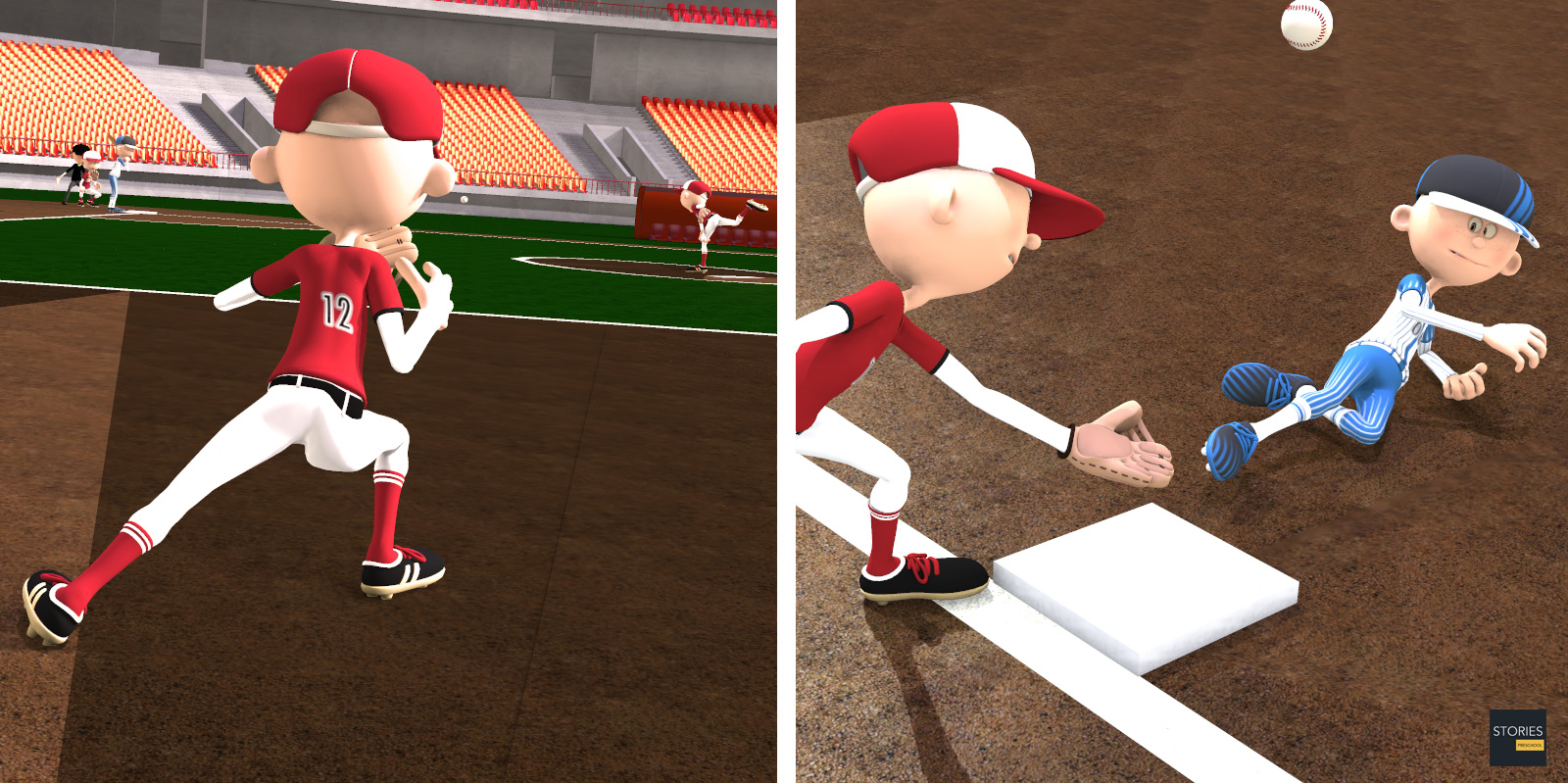
Some tag plays are so close that the slide performed by the runner affects the outcome. The right type of slide with the right location might allow the runner to be safe, while a conventional slide might allow the defending player to lay down the tag in time.
Balk
In baseball, a pitcher can commit a number of illegal motions or actions that constitute a balk. Most of these violations involve a pitcher pretending to pitch when he has no intention of doing so. In games played under the Official Baseball Rules, a balk results in a dead ball or delayed dead ball. In certain other circumstances, a balk may be wholly or partially disregarded. Under other rule sets, notably in the United States under the National Federation of High Schools (Fed or Federation) Baseball Rules, a balk results in an immediate dead ball. In the event a balk is enforced, the pitch is generally (but not always) nullified, each runner is awarded one base, and the batter (generally) remains at bat, and with the previous count. The balk rule in Major League Baseball was introduced in 1898.
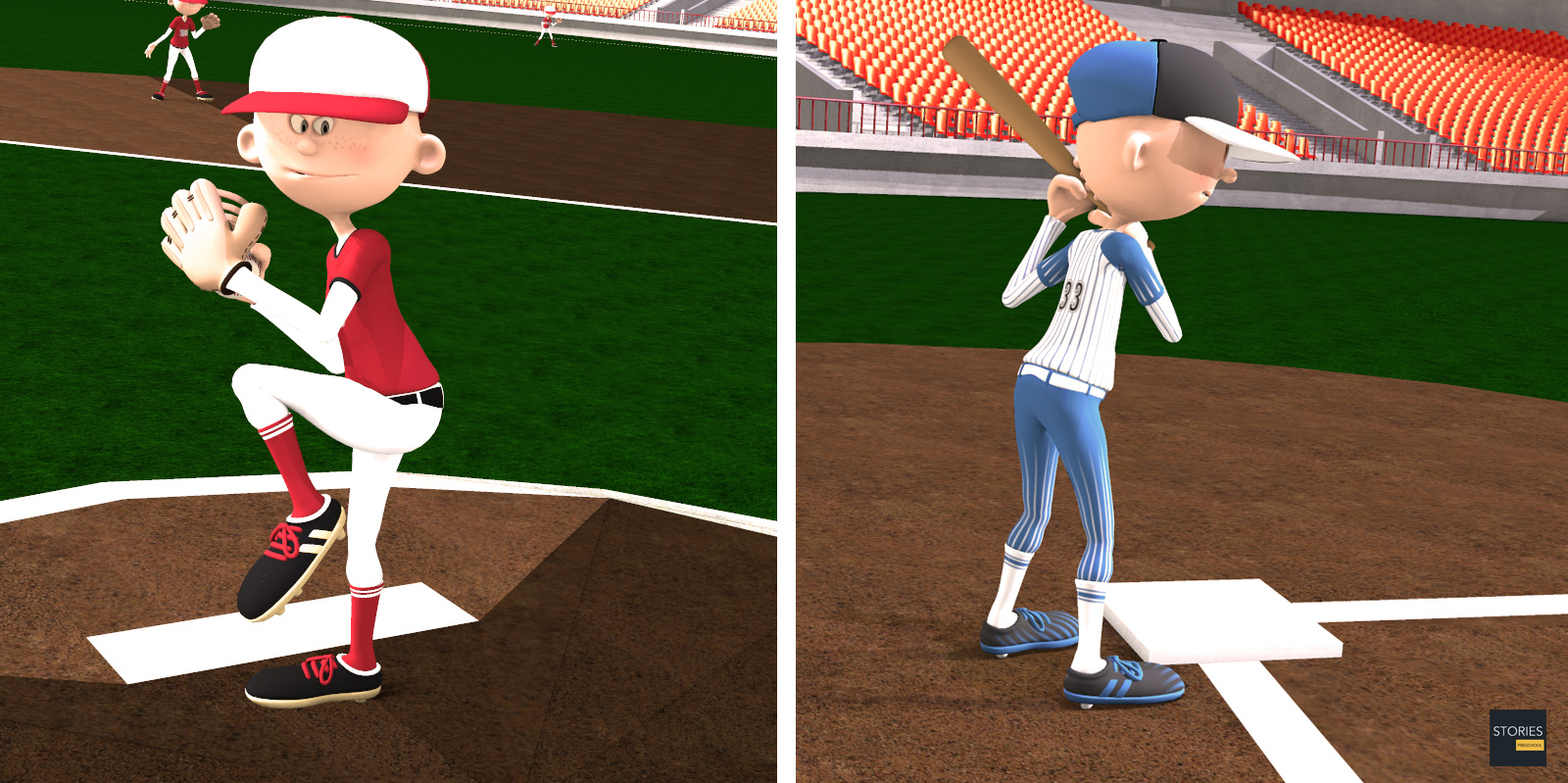
Bases Loaded
Runners on first, second, and third base. Also known as "bases full", "bases packed", "bases jammed", "bases juiced", "bases chucked", "bases polluted", or "bases drunk". This presents a great scoring opportunity for the batting team, but it also presents an easy double play opportunity for the defense. Causing the bases to become loaded is called loading the bases. A batter is often intentionally walked when there are runners on 2nd and 3rd base to make it easier for the defense to record more than one out.
Caught Stealing
In baseball, a runner is charged, and the fielders involved are credited, with a time caught stealing when the runner attempts to advance or lead off from one base to another without the ball being batted and then is tagged out by a fielder while making the attempt. A time caught stealing cannot be charged to a batter-runner, a runner who is still advancing as the direct result of reaching base. In baseball statistics, caught stealing is denoted by CS.
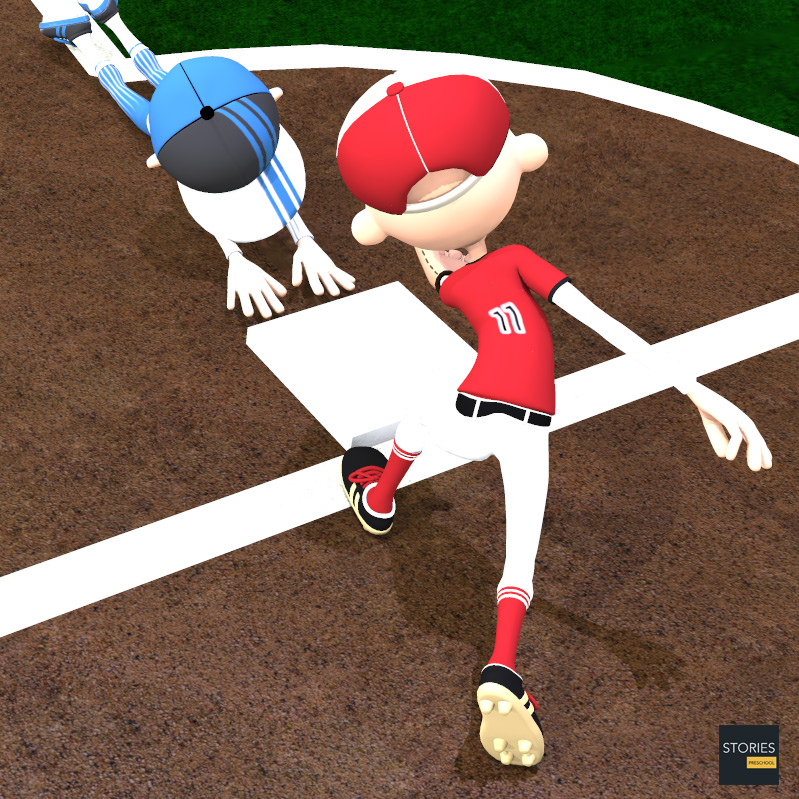
Contact Play
The contact play is a base running play in the sport of baseball. It usually refers to a runner on third base breaking for home (but occasionally refers to a runner at second base breaking for third).
Left on Base
- A baserunner is said to be left on base (abbreviated LOB) or stranded when the half-inning ends and he/she has not scored or been put out. This includes a batter-runner who has hit into a fielder's choice, causing another runner to be put out as the 3rd out.
- Team LOB totals are commonly reported in a baseball box score. It counts only those left standing on the bases when the third out of an inning occurs. Team LOB is used in "proving" a box score. The number of a team's plate appearances is to equal the sum of that team's runs, that team's LOB, and the opposing team's putouts. In other words, every batter who completes a plate appearance is accounted for by a run scored, being put out, or LOB.
- Individual LOB totals are sometimes reported in baseball box scores. This is a more recent statistic that is computed for each player who is at bat at least once in a game and is calculated on how many baserunners were "left on base" when the player was at-bat and caused an out, no matter how many outs there were at the time. Note that "at bat" does not include other plate appearances such as sacrifice bunts or flies made by the batter, third outs caused by pickoffs or caught stealing, or games ended with the winning run scoring on a successful steal, etc. Two common misconceptions of the individual LOB are that the individual LOB is the number of times the player was left on base as a baserunner (this is a "runner's LOB" and is not usually recorded), or that the individual LOB applies only when the at-bat player caused the third out. Note that the total of the individual LOBs for all players on a team will usually exceed the team LOB.
- A related statistic is "left on base in scoring position", which includes only those LOB where the runner was occupying second or third base. Yet another related statistic is "left on base in scoring position with less than two out". The intention of these statistics is to measure the tendency of a team or player wasting an opportunity to score.
Safe
In baseball, a baserunner is safe when he reaches a base without being put out by various ways. While a runner is touching a base, he is usually not in jeopardy of being put out, and is thus "safe" from fielders' actions. The runner is in jeopardy once again, negating this safety, when he ceases touching the base, when forced on a force play, or when the runner commits interference.
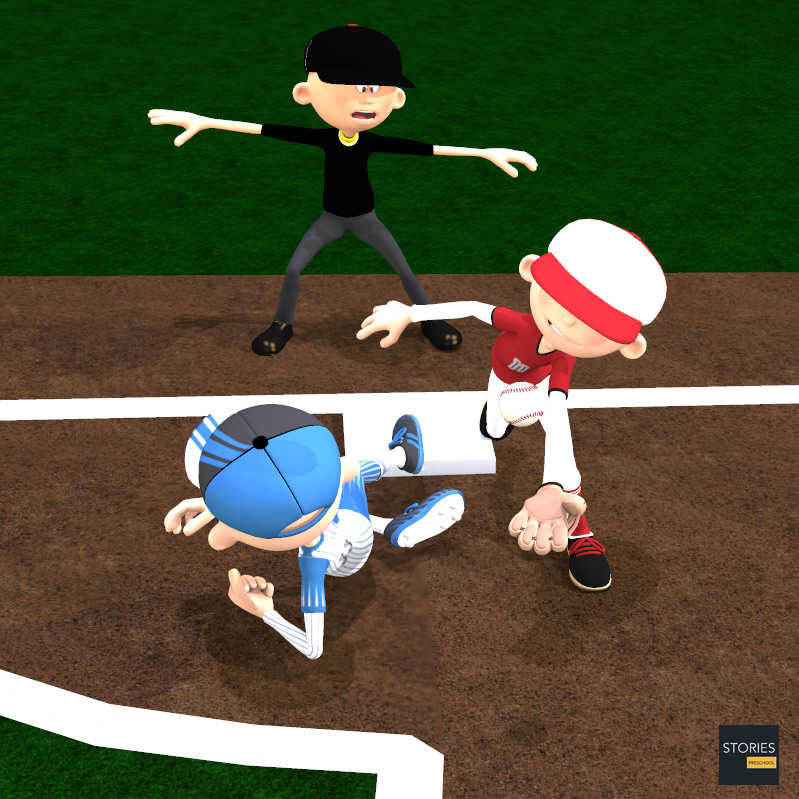
Scoring Position
In the sport of baseball, a baserunner is said to be in scoring position when he is on second or third base. The distinction between being on first base and second or third base is that a runner on first can usually only score if the batter hits an extra-base hit, while a runner on second or third can score on a single.
Slide
In baseball, a slide is the action of a player, acting as a baserunner, who drops his body to the ground once he is very close to the base he is approaching and slides along the ground to reach the base. A baserunner may slide into a base in a number of different ways and for a number of perceived reasons, including to avoid a tag out, to avoid overrunning the base, and to interfere or avoid contact with the defensive player protecting the base.
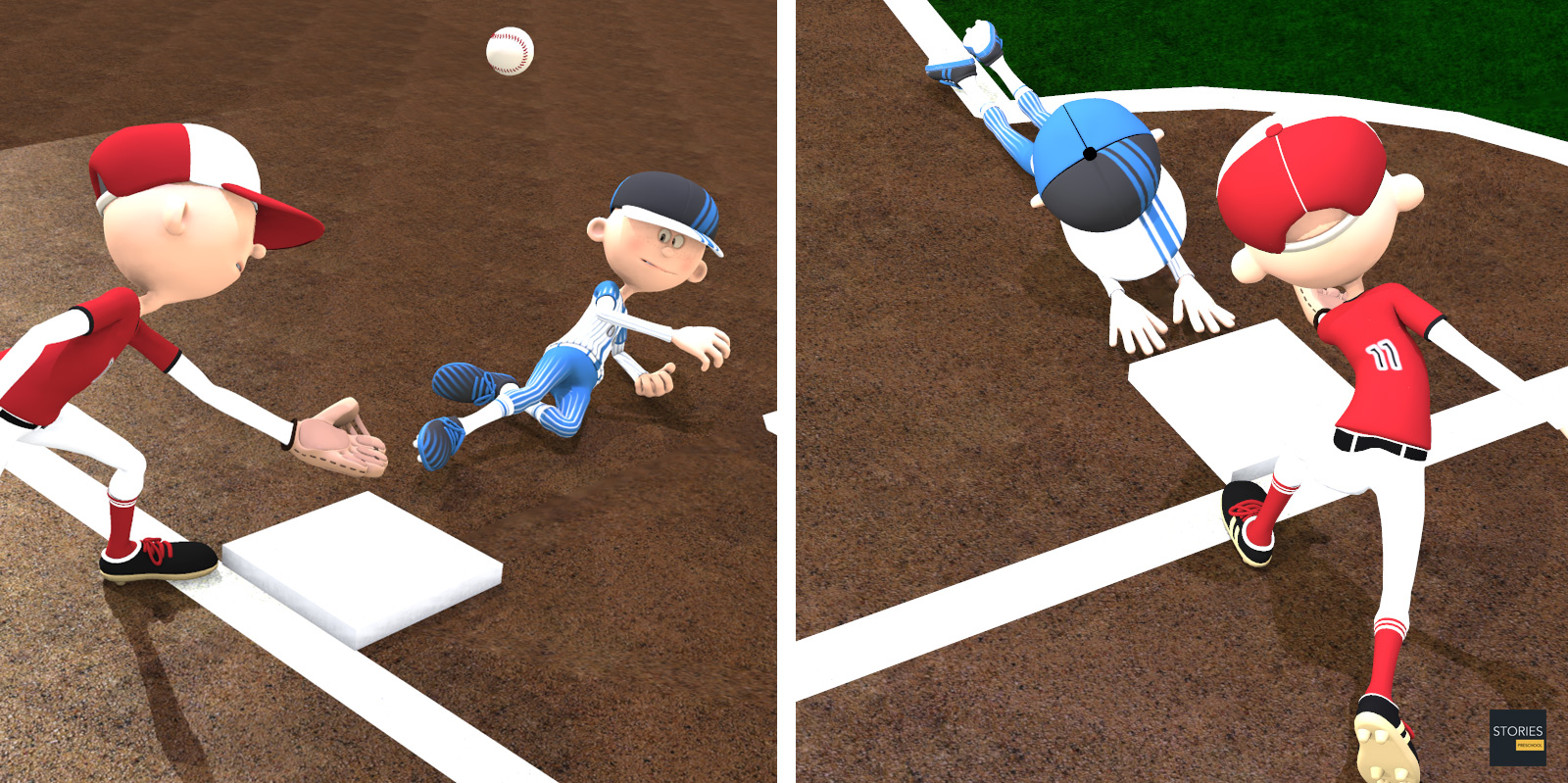
Small Ball
In the sport of baseball, small ball is an informal term for an offensive strategy in which the batting team emphasizes placing runners on base and then advancing them into scoring position for a run in a deliberate, methodical way. This strategy places a high value on individual runs and attempts to score them without requiring extra base hits, or sometimes without base hits at all, instead using bases on balls, stolen bases, sacrifice bunt or sacrifice fly balls, the hit-and-run play, and aggressive base running with such plays as the contact play. A commonly used term for a run produced playing small ball is a "manufactured run". This style of play is more often found in National League game situations than in the American League due in large part to the absence of the designated hitter in the National League.
Squeeze Play
In baseball, the squeeze play (aka squeeze bunt) is a maneuver consisting of a sacrifice bunt with a runner on third base. The batter bunts the ball, expecting to be thrown out at first base, but providing the runner on third base an opportunity to score. Such a bunt is uncommon with two outs because there is a significant chance that the batter would be thrown out at first base, ending the inning and thus negating the score.
Stolen Base
In baseball, a stolen base occurs when a runner advances to a base to which he is not entitled and the official scorer rules that the advance should be credited to the action of the runner. The umpires determine whether the runner is safe or out at the next base, but the official scorer rules on the question of credit or blame for the advance under Rule 10.
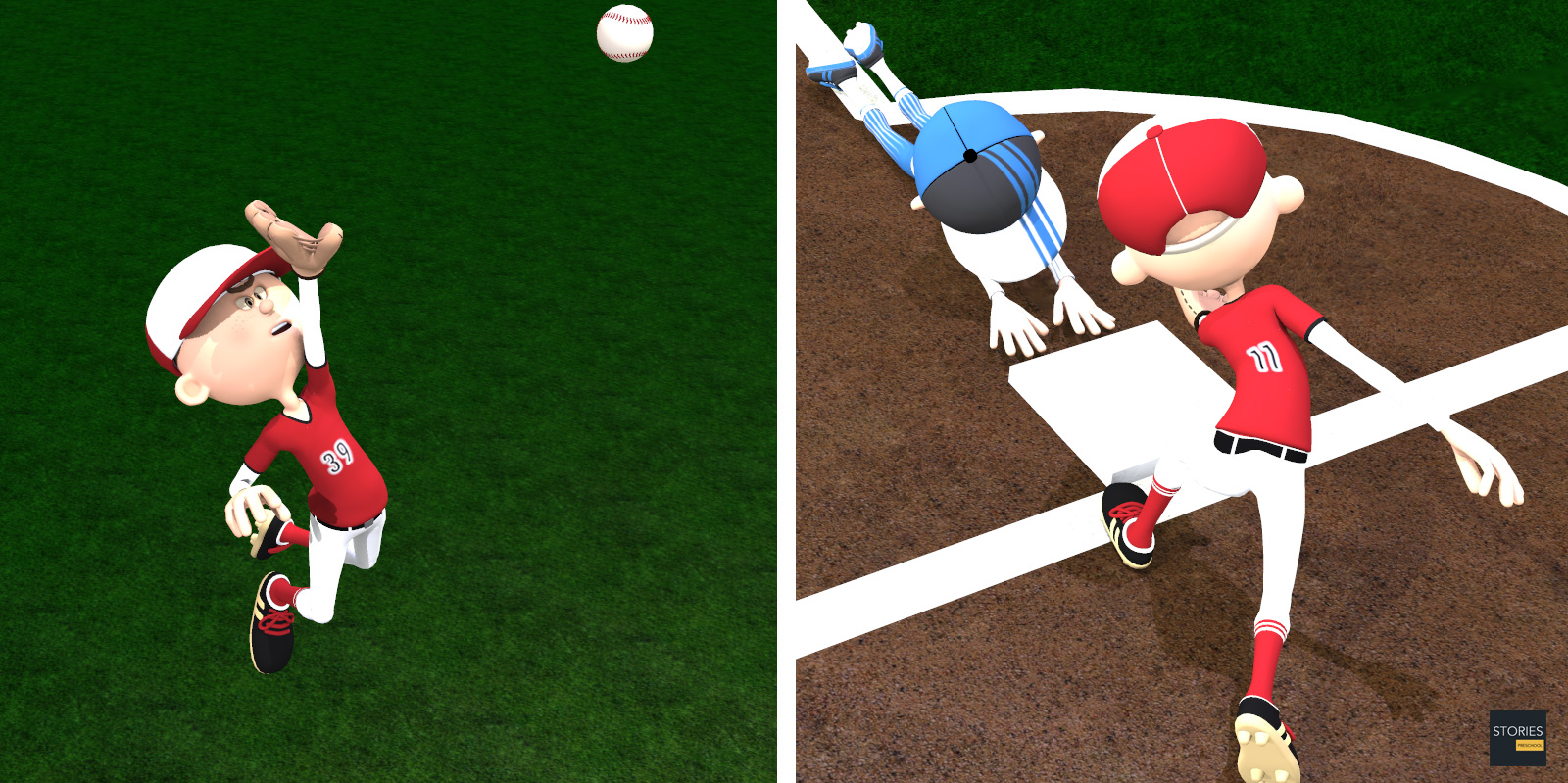
Tag Up
In baseball, to tag up is for a baserunner to retouch or remain on their starting base (the time-of-pitch base) until (after) the ball either lands in fair territory or is first touched by a fielder. By rule, baserunners must tag up when a fly ball is caught in flight by a fielder. After a legal tag up, runners are free to attempt to advance, even if the ball was caught in foul territory. On long fly ball outs, runners can often gain a base; when a runner scores by these means, this is called a sacrifice fly. On short fly balls, runners seldom attempt to advance after tagging up, due to the high risk of being thrown out.
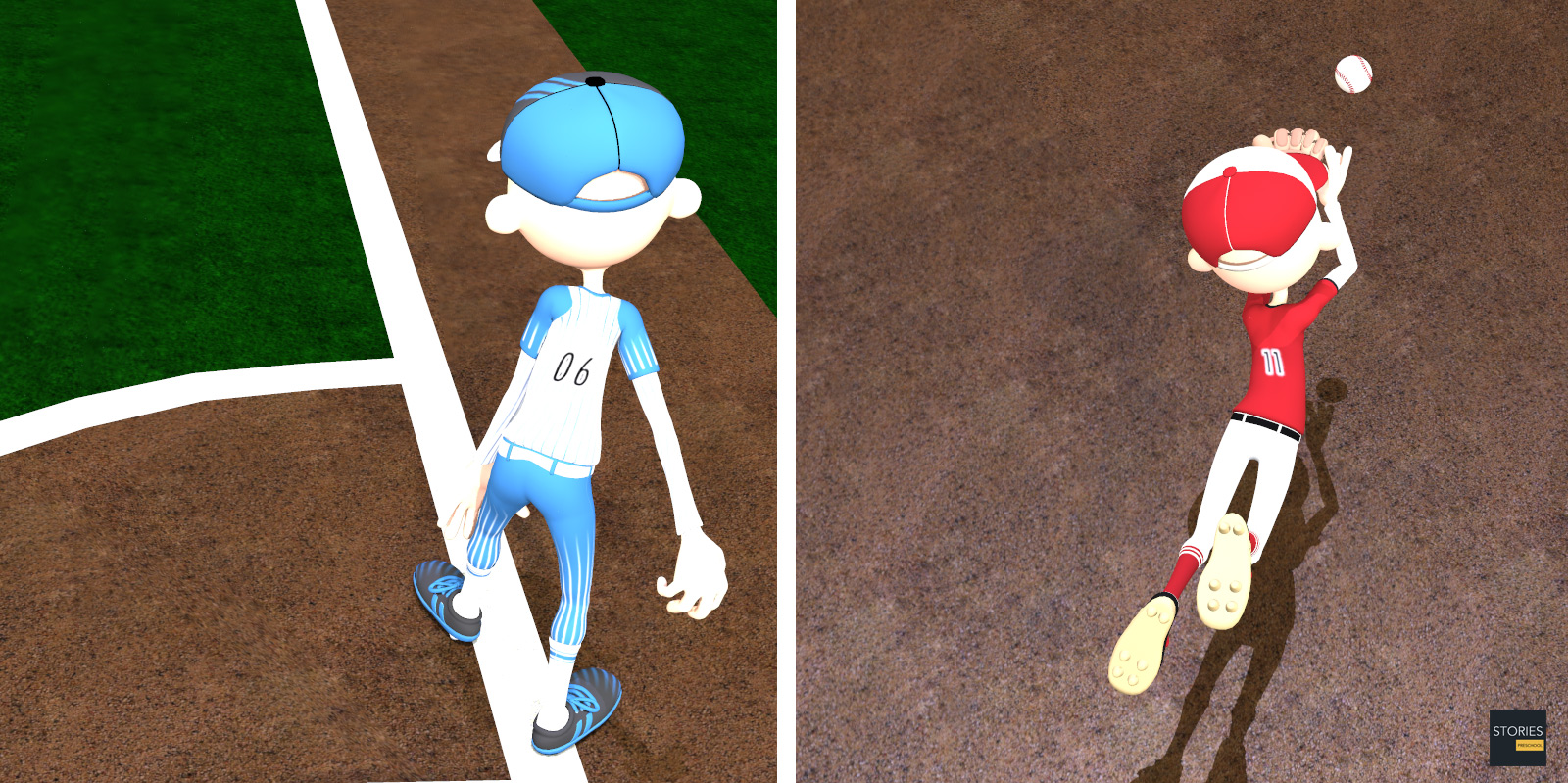
When a baserunner fails to tag up on a caught fly ball (for instance, if they started running too early, thinking the ball wouldn't be caught), they may be "doubled off", which results in them being called out. To double a runner off, a fielder must touch the runner's starting base while in possession of the ball, before the runner returns to the base. If the baserunner appeared to tag up, but a fielder suspects the baserunner may have left the base too early (thus failing to legally tag up), the fielder may attempt to double the runner off by touching the runner's starting base while controlling the ball, before the next pitch is thrown. This is considered a type of appeal play. If the umpire agrees that the runner did not retouch after the ball was touched by a fielder, the umpire will call the runner out, and anything else the runner did during the play (such as score a run) is negated. Doubling a runner off is considered a "time play" (as opposed to a force play), which means that even if the doubling-off is the third out of an inning, any runs which score before the double-off will count (unless the run was scored by the same runner that was doubled off, in which case the run will not count in any situation).
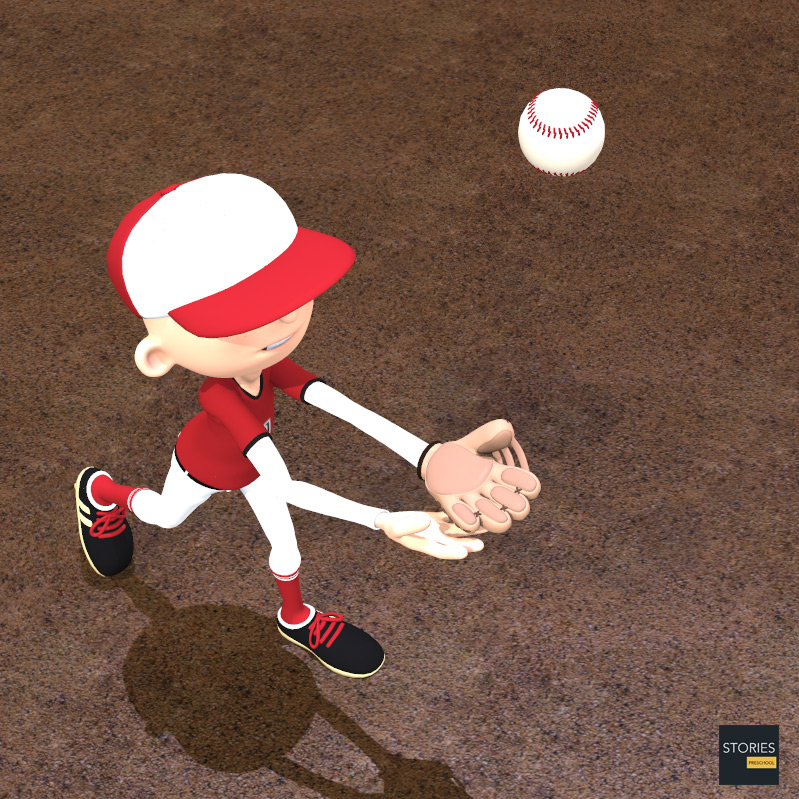
SPORTS

RESOURCES
This article uses material from the Wikipedia articles "Baseball", "Base running", "Glossary of baseball", "Caught stealing", "Contact play", "Safe (baseball)", "Scoring position", "Slide (baseball)", "Small ball (baseball)", "Squeeze play (baseball)", "Stolen base", "Tag up", which is released under the Creative Commons Attribution-Share-Alike License 3.0.
© Stories Preschool. All Rights Reserved.












